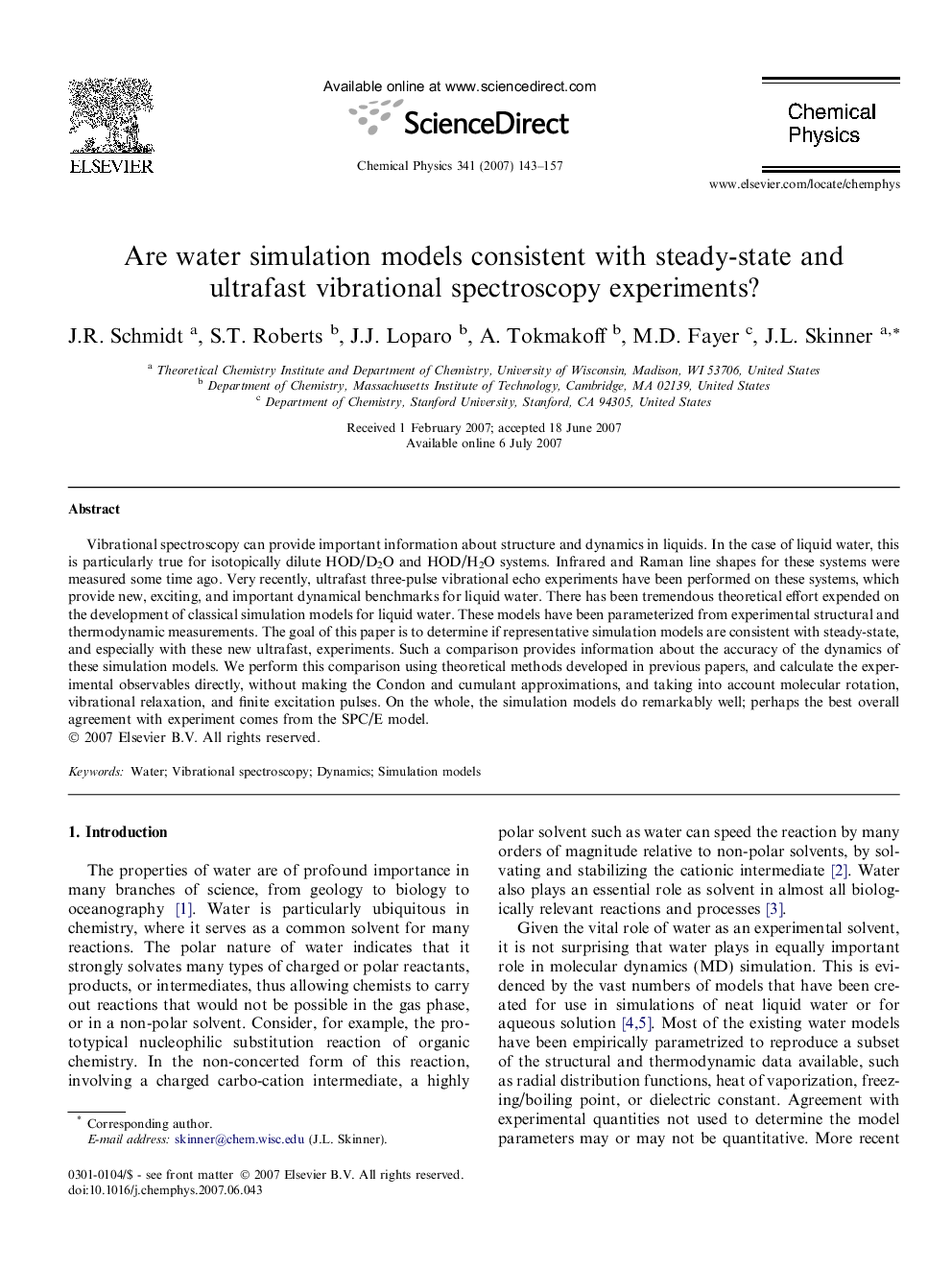| Article ID | Journal | Published Year | Pages | File Type |
|---|---|---|---|---|
| 5376096 | Chemical Physics | 2007 | 15 Pages |
Abstract
Vibrational spectroscopy can provide important information about structure and dynamics in liquids. In the case of liquid water, this is particularly true for isotopically dilute HOD/D2O and HOD/H2O systems. Infrared and Raman line shapes for these systems were measured some time ago. Very recently, ultrafast three-pulse vibrational echo experiments have been performed on these systems, which provide new, exciting, and important dynamical benchmarks for liquid water. There has been tremendous theoretical effort expended on the development of classical simulation models for liquid water. These models have been parameterized from experimental structural and thermodynamic measurements. The goal of this paper is to determine if representative simulation models are consistent with steady-state, and especially with these new ultrafast, experiments. Such a comparison provides information about the accuracy of the dynamics of these simulation models. We perform this comparison using theoretical methods developed in previous papers, and calculate the experimental observables directly, without making the Condon and cumulant approximations, and taking into account molecular rotation, vibrational relaxation, and finite excitation pulses. On the whole, the simulation models do remarkably well; perhaps the best overall agreement with experiment comes from the SPC/E model.
Related Topics
Physical Sciences and Engineering
Chemistry
Physical and Theoretical Chemistry
Authors
J.R. Schmidt, S.T. Roberts, J.J. Loparo, A. Tokmakoff, M.D. Fayer, J.L. Skinner,
